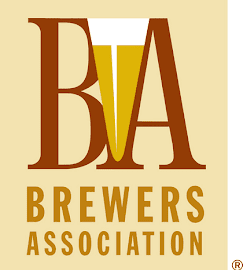This will be a story about the only female cask-ale-tester in England. But the tale begins elsewhere.
Many mainstream US beer drinkers prefer bottled beers over draught beers. Ask them why and they will tell you that bottled beers taste better.
NAILs and ILLs (North American Industrial Lagers and International Light Lagers) are, to be polite, very delicately-flavored beers. The deleterious flavor effects of dirty draught lines will be very noticeable on them. Many craft beers, loaded with lots of hops, may mask filthy draught lines (a bit) longer.
Cleaning the cask lines at Rustico in Alexandria, Va.
As important as it is to clean draught lines, for cask ale lines —beer at its freshest— it might be more so.
Beer buff Annabel Smith today visited pub number 500 in her job as Britain's only female ale tester.
Annabel regularly sips up to 36 beers A DAY and has tried almost 26,000 samples of 3,000 different brews in three years in the job. <...>Annabel is the only woman among Cask Marque's 46-strong staff who award plaques to licensees who serve the perfect pint of cask conditioned ale. So far around 5,000 have made the grade. <...>
Annabel isn't always flavour of the month with landlords and often pulls a pub owner up about the quality of his beer - even on nights out with friends. She added: 'Sometimes they don't take too kindly to criticism and can be quite confrontational - but they usually calm down when I explain what my job is. 'Then they often end up asking me how they can put it right or ask me to go down and have a look in the cellar to see what's going wrong.
Quality is so important because most people will taste a poor pint, leave it on the table and just never go back into that pub again.It's a tough job - but someone's got to do it: Meet Britain's only female beer taster Daily Mail Reporter 04th August 2008
What principally builds up in draught and cask lines is 'beer stone' (calcium-like deposits), sugars, and —especially in the case of craft and cask beers— proteins, hop resins, and yeast. The sugar can attract bacteria and other microflora: it won't be dangerous, such as with spoiled milk or food, but it will be unpleasant tasting. As an instructor once told me, "Don't clean, and the bugs will come."
How often should a bar clean its lines? Once every two weeks should be the optimal minimum.












I like the places that clean their lines every time they swap out a keg. (And, of course, dump a keg if it is two weeks old.)
ReplyDelete